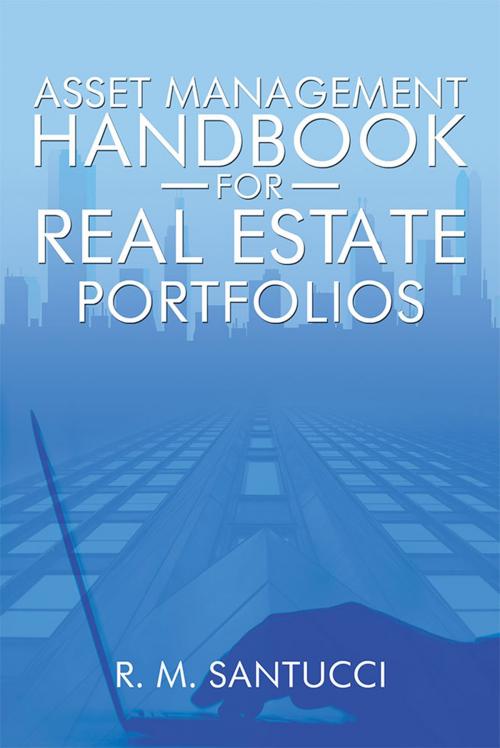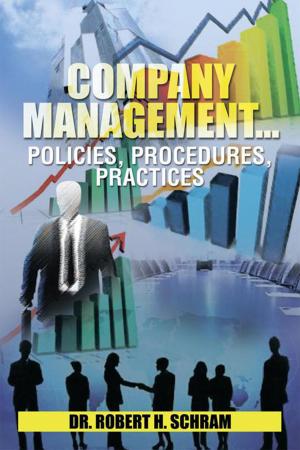| Author: | R. M. Santucci | ISBN: | 9781483682884 |
| Publisher: | Xlibris US | Publication: | October 14, 2013 |
| Imprint: | Xlibris US | Language: | English |
| Author: | R. M. Santucci |
| ISBN: | 9781483682884 |
| Publisher: | Xlibris US |
| Publication: | October 14, 2013 |
| Imprint: | Xlibris US |
| Language: | English |
The Asset Management Handbook is divided into three phases. Chapters 1 through 3 are conceptual introductions. Chapters 4, 5, 6 and 7 get into the meat of the policies and techniques of evaluating the capital needs of your property over the next 40 years. Chapters 8 and 9 help you identify which properties are doing well and which are the most threatened. What action should you take? What are the standard preservation and rejuvenation options available to a real estate portfolio manager? What is Asset Management? People are more accustomed to thinking about asset management of money or stocks or a package of annuity and savings accounts. Real estate asset management is a slower, longer term process. The properties in your portfolio, especially in affordable housing, have life cycles of 30, 40 or infinite time periods. Most nonprofit owners are not interested in selling to capture any appreciation on their properties. Their goal is to provide housing for the foreseeable future as long as the asset can perform. Many nonprofits and mid size property owners do not have a dedicated asset manager. It is extraordinarily important that someone take on that long-term analysis, be it for 10%, 25% or 50% of a full time employee. The next step is to benchmark your properties. How are you doing compared to the world? Not just on straight bottom line consideration, but how about in human services? Have you saved sufficient money to replace the roof or add the sprinklers that will be required at the next renovation? The Asset Management Handbook provides well-established objective criteria for 25 different variables. Weve seen participants in the asset management practicum expand that up to 40 variables to analyze on an annual basis. Well see how benchmarking and risk ranking of your portfolio are essential first steps in establishing its viability and needs. Capital Needs and Their Funds. In this meat of the manual, we walk you through essential policies that define how your properties will operate over the long term. We show how policies made by lenders, bankers and other short term partners can be self destructive and damaging to property owners holding for the long term. First example of the dichotomy, the lender is suggesting the reserve is sufficient when two years after their loan matures, the property will require $4 million of replacement expenditures. This is fine for investment property held for resale. You just flip it and get down the road. Most affordable housing owners do not consider selling the property as a positive outcome. Even if youve never performed a property inspection before, the Handbook offers you easy methods of counting and sorting components into well established remaining economic lives Then it is on to the massive spreadsheet that calculates the future need and the various waves in which it will appear. Exterior paint first, then roofs, windows and doors, and kitchens and baths follow and then it starts all over again. Most capital needs assessments performed by third parties make financial assumptions that are untenable. Their interest rates on earnings are overstated and their inflation rate on the components are generally understated leaving you with significant shortfalls, even if you have escrowed according to directions. We will keep you out of that trap, showing you the realistic funds that are required and the time periods when the inevitable refinancing windows will occur. Risk and Solutions. In the final section, we evaluate your primary risks. Which properties should you address first? Which properties have the strength and energy to function on their own? Then what should you do about it? Refinance? Renegotiate? Value engineer? Raise rents? In the foot race, the runner is always caught by the tsunami of required replacements. It is just a fact of the business that every 20 to 30 years youve got to re-invest a significant amount of money
The Asset Management Handbook is divided into three phases. Chapters 1 through 3 are conceptual introductions. Chapters 4, 5, 6 and 7 get into the meat of the policies and techniques of evaluating the capital needs of your property over the next 40 years. Chapters 8 and 9 help you identify which properties are doing well and which are the most threatened. What action should you take? What are the standard preservation and rejuvenation options available to a real estate portfolio manager? What is Asset Management? People are more accustomed to thinking about asset management of money or stocks or a package of annuity and savings accounts. Real estate asset management is a slower, longer term process. The properties in your portfolio, especially in affordable housing, have life cycles of 30, 40 or infinite time periods. Most nonprofit owners are not interested in selling to capture any appreciation on their properties. Their goal is to provide housing for the foreseeable future as long as the asset can perform. Many nonprofits and mid size property owners do not have a dedicated asset manager. It is extraordinarily important that someone take on that long-term analysis, be it for 10%, 25% or 50% of a full time employee. The next step is to benchmark your properties. How are you doing compared to the world? Not just on straight bottom line consideration, but how about in human services? Have you saved sufficient money to replace the roof or add the sprinklers that will be required at the next renovation? The Asset Management Handbook provides well-established objective criteria for 25 different variables. Weve seen participants in the asset management practicum expand that up to 40 variables to analyze on an annual basis. Well see how benchmarking and risk ranking of your portfolio are essential first steps in establishing its viability and needs. Capital Needs and Their Funds. In this meat of the manual, we walk you through essential policies that define how your properties will operate over the long term. We show how policies made by lenders, bankers and other short term partners can be self destructive and damaging to property owners holding for the long term. First example of the dichotomy, the lender is suggesting the reserve is sufficient when two years after their loan matures, the property will require $4 million of replacement expenditures. This is fine for investment property held for resale. You just flip it and get down the road. Most affordable housing owners do not consider selling the property as a positive outcome. Even if youve never performed a property inspection before, the Handbook offers you easy methods of counting and sorting components into well established remaining economic lives Then it is on to the massive spreadsheet that calculates the future need and the various waves in which it will appear. Exterior paint first, then roofs, windows and doors, and kitchens and baths follow and then it starts all over again. Most capital needs assessments performed by third parties make financial assumptions that are untenable. Their interest rates on earnings are overstated and their inflation rate on the components are generally understated leaving you with significant shortfalls, even if you have escrowed according to directions. We will keep you out of that trap, showing you the realistic funds that are required and the time periods when the inevitable refinancing windows will occur. Risk and Solutions. In the final section, we evaluate your primary risks. Which properties should you address first? Which properties have the strength and energy to function on their own? Then what should you do about it? Refinance? Renegotiate? Value engineer? Raise rents? In the foot race, the runner is always caught by the tsunami of required replacements. It is just a fact of the business that every 20 to 30 years youve got to re-invest a significant amount of money















